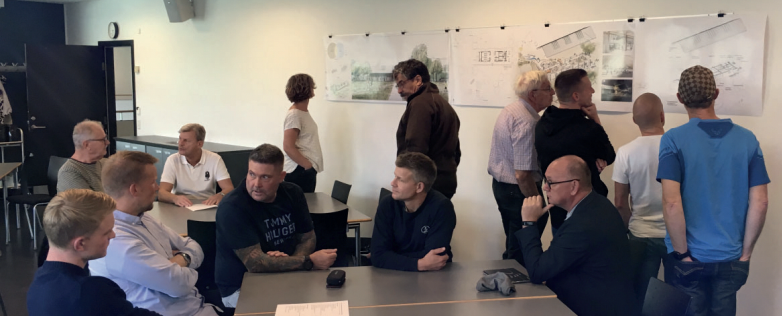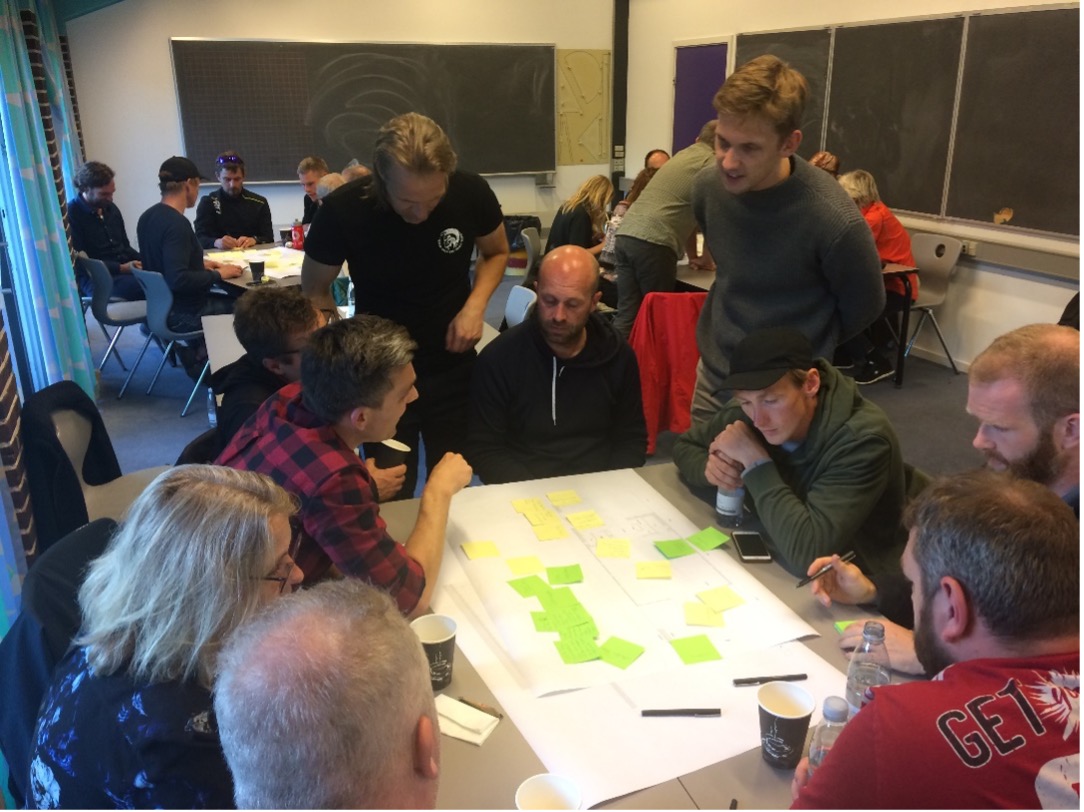


The trail centre project was built on cross-sectorial cooperation. The five trail centres that are being built have all been developed and built in close collaboration with stakeholders across different sectors. These included the local municipalities where the centres would be built, the local sports associations who would be using the sites, local citizens and would-be users, as well as other interested parties.
The participatory approach included holding 4 to 5 workshops with stakeholders to understand user needs, ideas, etc. This both enabled and ensured dialogue between the architects involved in the planning and design processes of the trail centres and the users/interested parties. Dialogue with architects also ensured that the buildings’ aesthetics, as well as functions, met stakeholders’ wishes.
The activities provided, or facilitated, by the trail centres were developed in collaboration with the local actors and associations. A participatory approach to planning also gives the users and local community a greater sense of ownership and helps ensure a sense of community between actors and across their respective sports.
Additionally, the development of the minimum criteria for determining the location and functions of the trail centres arose through cross-sectorial collaboration between project members.
- Holding numerous workshops with stakeholders across planning and design stages ensures consistent collaboration across sectors.
- Workshops with users facilitates greater understanding of user needs, opinions, and ideas which can positively influence the planning and design of trail centres. This can ultimately help determine the success of the trail centre in catering to user needs as well as the local community’s satisfaction with the end product.
- Holding workshops with stakeholders helped architects and those delivering the project to understand user needs and helped inform the functions that trail centres should provide for their users. Workshops acted as a space where stakeholders could share ideas and voice their opinions, ultimately ensuring that centres could best meet local communities’ and users’ needs.
- Organising multiple workshops ensured that there was consistent dialogue and idea sharing between parties throughout the design and development stages of trail centres.
- A participatory approach to planning and design also enabled stakeholders to voice their opinions regarding the aesthetics of trail centres, an often-contentious topic that is crucial to the overall success of infrastructure projects.